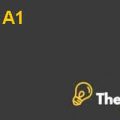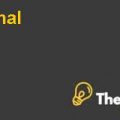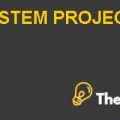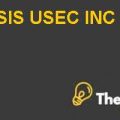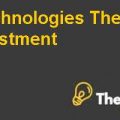HES Company’s Valuation Case Solution
Company’s Valuation
From the following analysis, it has been determined that HES company used different techniques in order to identify the value of the firm at the end of the period. For that, the company first analyzed the projected income statement which is determined through the use of historical data. In which each component is calculated by the average values of the past. On the other side, the same process has been applied to the balance sheet. However, the main reason to calculate the projected results would be to know how much worth the company would possess at the end of the selected period and therefore, in order to know the expected value that is based on the further projected values to determine the viability of the results generated by the firm in the future.
Residual Income
To determine the valuation process, the first step for HES to calculate the results is determining the residual income of the firm. Which is the net result determined through deducting the operating income from the results that would be calculated through the multiplication of cost of capital with the average operating assets. Where the average operating assets represents the assets that would generate the operating income for the company like cash and cash equivalent, account receivable, fixed assets etc. Whatever, the net result indicates that the residual income would tend to increase year by year due to the fact that the revenues would increase constantly. So it shows that the company would perform better in the future.
Value to Book
The other part of the case represents the calculated value of the book determined through dividing the total equity with the common shares outstanding. So it shows that how much earnings would be contributed to the shareholders if the same level of outstanding shares are applied. However, the results indicate that with large value of earnings by the company gradually under the same level outstanding shares. It simply defines that the book value per share would tend to increase and therefore, increase the shareholder’s interest regarding to stay within a certain period of time.
FCF of the company
After determining the expected income statement and the balance sheet of the company, it shows that in order to calculate the net present value of the company, a method of free cash flows provide a detail valuation and therefore, concluded the net amount of the firm at the end of the period by the use of cost of capital and the terminal growth value. For that, the company also calculated the WACC by setting the risk-free rate to be 2% and market risk premium to be 10% and assumed the value of beta to be 1.5. Next the company determined the cost of equity by using all the following assumptions, the cost of capital is calculated through the use of interest over the principle amount of the debt. So it has been analyzed that by using all the calculated results, the company applied the standard formula in order to calculate the Weighted average cost of capital.
So after determining the value of WACC, the company then calculate the net present value by relating the WACC to all the cash flows from the firm. Thus it shows that the net value at the end of fifth year would be $687,686. However, when expanding the years, it would generate $826,745 at the end of the tenth year.
FCF to Equity
Under the process of determining the cash flows of the company, it has been identified that the cash flows would also generated for the equity as well by adding the net borrowings into the format. Which is the difference between the debt paid and raised......................
This is just a sample partial case solution. Please place the order on the website to order your own originally done case solution.

